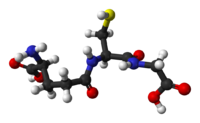
Plant Lipidomics Using UPLC-QTOF-MS.
Sign Up to like & getrecommendations! Published in 2018 at "Methods in molecular biology"
DOI: 10.1007/978-1-4939-7819-9_11
Abstract: Lipids are primary metabolites used for energy storage, signal transduction, and pigmentation, besides being common membrane components. Considering the importance of comprehensive lipid analysis (lipidomics) for a detailed understanding of cellular metabolic states, this chapter… read more here.
Keywords: plant; uplc qtof; plant lipidomics; biology ... See more keywords

Metabolic Phenotyping Using UPLC–MS and Rapid Microbore UPLC–IM–MS: Determination of the Effect of Different Dietary Regimes on the Urinary Metabolome of the Rat
Sign Up to like & getrecommendations! Published in 2020 at "Chromatographia"
DOI: 10.1007/s10337-020-03900-4
Abstract: A rapid reversed-phase gradient method employing a 50 mm × 1 mm i.d., C18 microbore column, combined with ion mobility and high-resolution mass spectrometry, was applied to the metabolic phenotyping of urine samples obtained from rats receiving different diets.… read more here.
Keywords: microbore; phenotyping using; mass; metabolic phenotyping ... See more keywords

Evaluation of cellular antioxidant components of honeys using UPLC-MS/MS and HPLC-FLD based on the quantitative composition-activity relationship.
Sign Up to like & getrecommendations! Published in 2019 at "Food chemistry"
DOI: 10.1016/j.foodchem.2019.04.105
Abstract: Antioxidant molecules in honey contributed to various biological effects, but antioxidant components markers in honey are required to be investigated further. Phenolic compounds, flavonoids and free amino acids were analyzed using UPLC-MS/MS and HPLC-FLD from… read more here.
Keywords: antioxidant components; activity; using uplc; hplc fld ... See more keywords

Systematic screening and characterization of prototype constituents and metabolites of triterpenoid saponins of Caulopphyllum robustum Maxim using UPLC‐LTQ Orbitrap MS after oral administration in rats
Sign Up to like & getrecommendations! Published in 2019 at "Journal of Pharmaceutical and Biomedical Analysis"
DOI: 10.1016/j.jpba.2019.02.005
Abstract: HighlightsIt's the first time that the in vivo multiple absorbed and metabolic components of Caulopphyllum Robustum after oral administration have been comprehensively revealed.The cracking model of biological samples in the effective part of Caulopphyllum Robustum… read more here.
Keywords: administration; metabolic pathways; uplc ltq; caulopphyllum robustum ... See more keywords

ASSAY OF TIROFIBAN AND IDENTIFICATION OF OXIDATIVE IMPURITY IN AQUEOUS INJECTION BY USING UPLC-PDA/QDa DETECTORS.
Sign Up to like & getrecommendations! Published in 2021 at "Annales pharmaceutiques francaises"
DOI: 10.1016/j.pharma.2021.06.002
Abstract: The basic objective of this study is to propose a short, reliable, mass compatible ultra-performance liquid chromatography (UPLC) method to confirm the identity of impurities and to estimate the assay and purity of Tirofiban simultaneously in aqueous… read more here.
Keywords: aqueous injection; pda qda; impurity; using uplc ... See more keywords

A Comparative Study of Serum Pharmacochemistry of Kai-Xin-San in Normal and AD Rats Using UPLC-LTQ-Orbitrap-MS
Sign Up to like & getrecommendations! Published in 2022 at "Pharmaceuticals"
DOI: 10.3390/ph16010030
Abstract: Kai-Xin-San (KXS) is a classic formula for the treatment of Alzheimer’s disease (AD). KXS has been widely used to treat emotional diseases; however, its active components remain unknown. There have been some reports about the… read more here.
Keywords: using uplc; xin san; group; model ... See more keywords